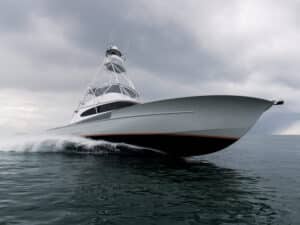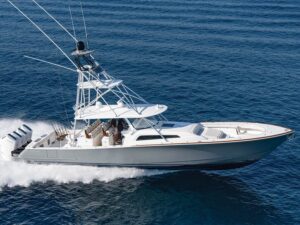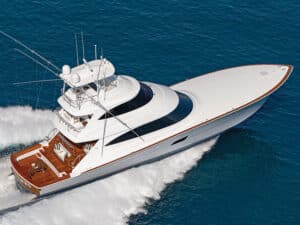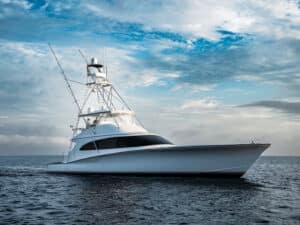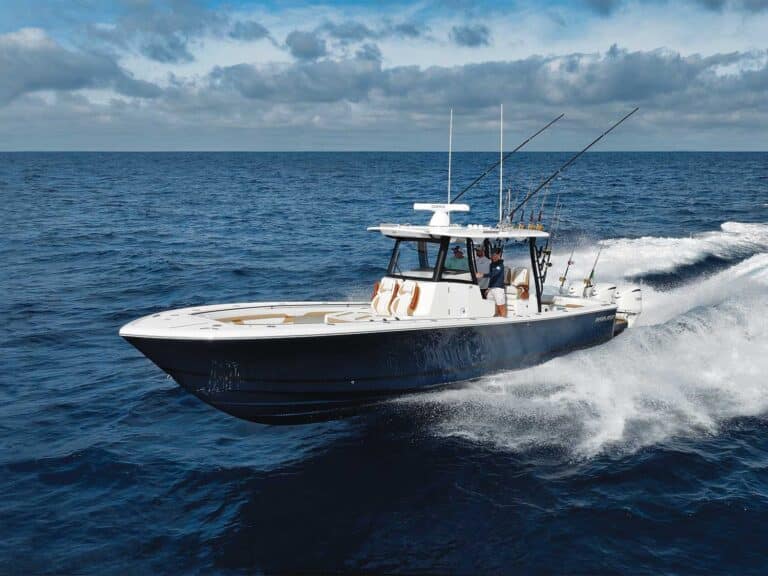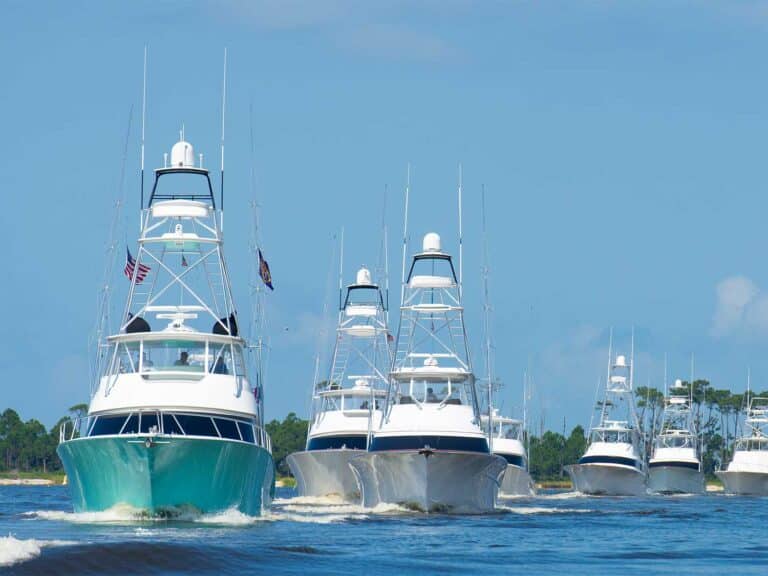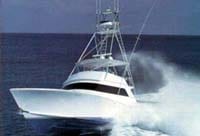
When Gary Chouest calls to check on his family’s wide-ranging exploits on their new American Custom Yacht 65-foot Freedom, he invariably has only two questions: “What did you catch?” and “Did you find anybody to race?”
The Freedom can do either task equally well. Her top speed of better than 50 mph will put her at the front of the pack in any setting, and her everything-you-could-want-and-more list of fishing equipment will impress any skipper. Throw in a grab bag of air-assist doors, hidden compartments, nifty storage innovations and one of the best cockpit designs going, and you’ve got what some might describe as the perfect sport-fisher.
Performance
Any time you discuss a boat built by Dominick LaCombe, you have to start with performance. The brains behind Monterey’s super-fast boats of the late 1980s, LaCombe specializes in manufacturing hulls that stretch the envelope of what it means to go fast. Despite his reputation, though, LaCombe understands that key balance between a light boat and a strong hull.
“A lot of people think that all I am is a speed freak,” LaCombe says. “That’s not so. Ride and fishability are the top criteria for me. I build a very efficient boat, and speed just happens to be one of the outcomes of efficiency.”
LaCombe achieves that efficiency with a cold-molded hull that combines a sharp forward entry with a flat aft section built with a composite of Kevlar, fiberglass and Bruynzeel plywood. In the interior, ACY utilizes Tricell, Divinycell and Nomex cores, depending on the application.
“We reduce weight where it makes sense to reduce weight,” LaCombe says. “We never sacrifice hull strength and integrity for the sake of speed.”
Of course, to achieve speeds in excess of 40 knots, a 65-foot boat has to have some serious horses under the hood. The Freedom’s stallions come from Detroit by way of Jack Bivens, whom LaCombe refers to as a “genius” in marine diesel applications. For the Freedom, Bivens converted a pair of brand-new Detroit 1692s into a set of heftier 1,750-hp 1696s. He then replaced one crankshaft in backward, so both oil filters would be located inboard, and then the team at ACY installed the diesels in a highly customized, very clean V-drive configuration.
This V-drive arrangement achieves one very important task – reducing the shaft angle by half, thereby increasing thrust and speed at all rpm ranges. The reduced angle (7.5 degrees) also helps prevent the stern from digging into the water in reverse, which allows the Freedom to back very aggressively.
My experience on the Freedom in Cozumel proved LaCombe’s approach a success. Not only did the boat go fast (43.5 knots with one slightly bent wheel), it maintained high speeds in sea conditions. One afternoon when crossing the 10-mile-wide channel between mainland Mexico and Cozumel, the Freedom found itself headed directly into a stiff wind and 3- to 5-foot head seas. Cruising at 1,850 rpm, she maintained a steady 31 knots. Topping out at 2,250 rpm, she achieved a stride of 40 knots, and did so with no spray hitting the bridge and with no pounding at all.
Fishability
ACY left nothing to want for on the 65. The boat provides plenty of everything a fisherman needs: storage, fish-holding capacity, bait freezers, crushed ice and tackle drawers. But the 65 offers more than just a lengthy equipment list. This cockpit is actually designed to keep the crew comfortable and alert.
First, all of the lockers on the salon bulkhead are high and have deep, curved lids, perfect for watching the baits. Thick cushions offer padding and back support, and a unique plastic sun visor attaches to the fiberglass overhang to reach down to just above eye level, keeping you out of the sun even early or late in the day. And if that’s not good enough for you, just reach up and pull down one of the three cockpit light lenses on the underneath side of the overhang, and an adjustable flow of air-conditioned air will automatically be blown directly into your face.
Such an elaborate system is more than a gimmick, LaCombe says. “We’ve tried to do things that will actually make you want to look for the fish instead of going into the salon,” he says.
Once you’re connected to a fish, you’ll appreciate the height of the covering boards, which are at just the right height where a crewman can tuck his knees underneath and still reach the water, which makes the process of releasing billfish easier and safer.
The cockpit offers two additional notable innovations. First is the refrigerator built with racks that resemble those in a soda machine which disperse a variety of drinks while keeping the contents from spilling when the door is opened. Second is a refrigerated fish box that is plumbed to an Eskimo ice machine churning out 600 pounds of shaved ice daily. Not only will this box hold a giant bluefin easily, on really long hauls it doubles as additional fuel capacity via a 200-gallon bladder designed to fit inside.
